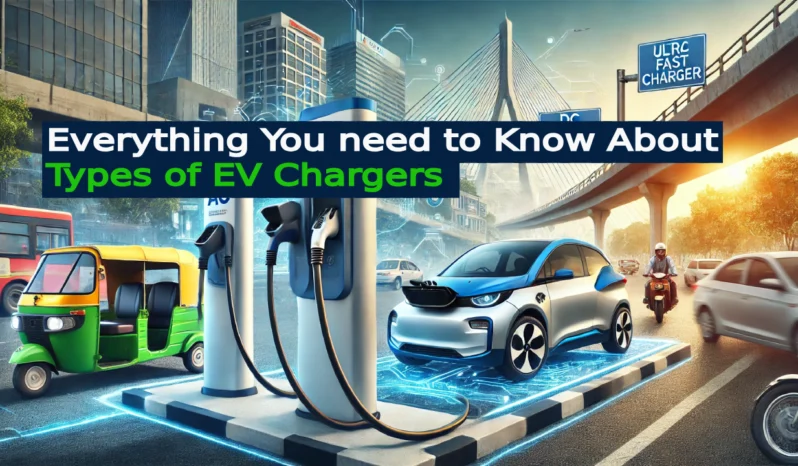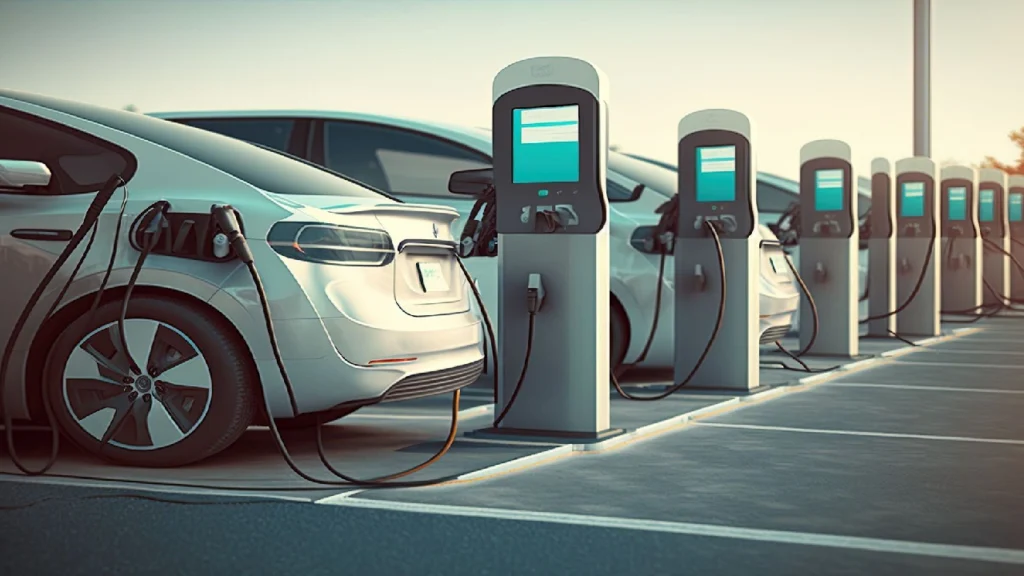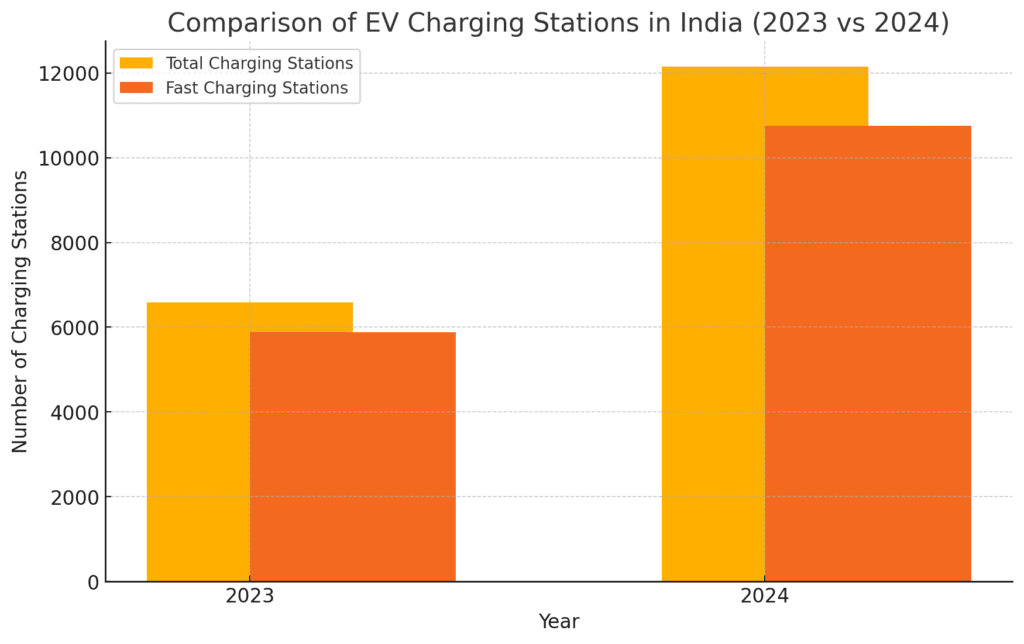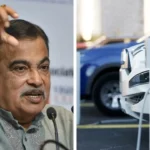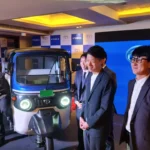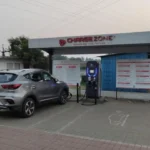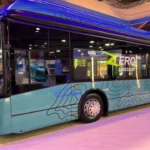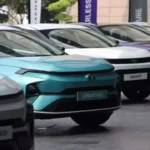As electric vehicles (EVs) gain traction in India, one critical element of this transition is understanding the different types of EV chargers. The right charging infrastructure is vital to support mass EV adoption in a country as diverse and dynamic as India. This article explores the various types of EV chargers—AC, DC, Fast, and Ultra-fast chargers—their suitability for Indian conditions, and the current state of EV charging infrastructure across the nation.
Types of EV Chargers
AC Chargers (Level 1 and Level 2)
- Level 1: This is the slowest type of charger and uses a standard 120V outlet. These are mainly found in homes and are suitable for plug-in hybrids and lower-capacity EVs.
- Level 2: Operating on 240V, these are faster than Level 1 and are widely used in homes, workplaces, and public places. Charging takes anywhere from 4 to 8 hours depending on the vehicle’s battery capacity.
DC Fast Chargers (Level 3)
- DC fast chargers are significantly faster than AC chargers. These chargers convert AC power to DC within the station, allowing direct input into the vehicle’s battery. They can charge an EV from 0 to 80% in around 30 to 60 minutes.
- DC chargers require specific infrastructure and are found in public stations and highways rather than homes.
Ultra-fast Chargers
Ultra-fast chargers are designed to provide even faster charging than DC fast chargers, capable of delivering up to 350 kW. These can charge a vehicle in less than 20 minutes. However, they are expensive to install and maintain, and the EV must be compatible with such high power.
Suitability for Indian Conditions
India’s unique conditions—diverse climate, traffic patterns, road infrastructure, and consumer habits—affect the suitability of different chargers.
AC Chargers (Level 1 and Level 2)
These are best suited for home installations and city-based charging. Given that most Indian EV owners will prefer to charge their vehicles overnight, Level 2 AC chargers offer a balance of convenience and cost. However, for long-distance travel or fleet vehicles, their slow charging speed is a disadvantage.
DC Fast Chargers
DC fast chargers are more practical for highways and public charging stations. In urban centers with high traffic density and tight spaces, fast charging can reduce the time spent on charging, especially for taxis, delivery fleets, and buses. These chargers are crucial for improving range anxiety among EV users, but their higher cost and infrastructure requirements make them less suited for home use.
Ultra-fast Chargers
Ultra-fast chargers are ideal for inter-city travel and expressway charging hubs. They cater to high-performance EVs and long-distance travel, which is currently a growing sector in India, especially on routes like Delhi-Mumbai or Bengaluru-Chennai. However, due to high installation and energy demands, they are likely to remain limited to premium highways and service stations.
Current EV Charging Infrastructure in India
As of late 2023, India had over 6,000 public EV charging stations. However, this number is concentrated in major cities like Delhi, Mumbai, Bengaluru, and Hyderabad. For example:
- Delhi leads with approximately 1,900 public chargers.
- Maharashtra, especially Mumbai and Pune, hosts over 1,500 chargers.
- Karnataka (Bengaluru) has around 1,200.
- Other states like Tamil Nadu, Gujarat, and Kerala are also actively expanding their charging infrastructure.
The current EV charging infrastructure in India has seen rapid expansion, with the total number of charging stations increasing from 6,586 in 2023 to 12,146 in 2024. Within this, the number of fast charging stations grew from 5,876 in 2023 to 10,756 by 2024.
The distribution of fast charging stations is primarily concentrated in major states and cities. Maharashtra and Delhi lead the way with the highest number of fast chargers, with 3,079 in Maharashtra and 1,886 in Delhi. Other states such as Karnataka, Kerala, and Gujarat are also emerging as key hubs for fast charging infrastructure.
The graph above compares the total number of charging stations and fast charging stations between 2023 and 2024, illustrating significant growth in both categories.
However, rural and less urbanized areas still face a scarcity of charging stations, limiting EV adoption.
Future Plans for EV Charging Infrastructure
Both the Indian government and private companies are rapidly scaling up charging infrastructure to meet the growing demand:
- Government Initiatives: The Indian government, under its Faster Adoption and Manufacturing of Hybrid and Electric Vehicles (FAME) scheme, aims to set up over 22,000 charging stations by 2025. The National Highways Authority of India (NHAI) is also planning to install EV chargers every 40-60 kilometers on major highways.
- Private Sector: Companies like Tata Power, Reliance, and Ather Energy are investing in creating a robust charging network. Tata Power, for instance, has already deployed over 1,500 public EV charging points and aims to reach 25,000 by 2025.
- Collaboration with Oil Companies: BPCL and Indian Oil Corporation (IOC) are incorporating EV chargers at petrol stations, offering fast and ultra-fast chargers to serve intercity travelers.
Pros and Cons of Different Chargers
| Charger Type | Pros | Cons |
| AC Chargers (Level 1 & 2) |
|
|
| DC Fast Chargers |
|
|
| Ultra-fast Chargers |
|
|
Energy Efficiency, Cost, and Installation Requirements
Energy Efficiency
AC chargers are more energy-efficient for home use, as they draw power at a slower rate, which is manageable for the grid. However, fast and ultra-fast chargers consume large amounts of energy in a short period, requiring substantial power sources and may create stress on local grids in energy-scarce areas.
Cost
AC chargers are cheaper to install (₹30,000-₹1,00,000) and are ideal for personal use, while DC fast chargers are much more expensive (₹15 lakh to ₹25 lakh). Ultra-fast chargers, the most expensive, can cost upwards of ₹35 lakh to ₹50 lakh per unit.
Installation Requirements
AC chargers can be installed at homes with minimal upgrades. DC and ultra-fast chargers, however, require significant infrastructure upgrades, including transformers, high-capacity cabling, and space, making them viable primarily in public areas or highways.
ELCTRIK Speaks
For the majority of urban EV users in India, AC Level 2 chargers strike a good balance between cost and convenience, particularly for home or workplace installations. However, as the EV market grows, DC fast chargers will be essential to alleviate range anxiety for intercity travelers, taxi fleets, and commercial vehicles. Ultra-fast chargers, while not immediately essential for most EV users, will play a crucial role in India’s EV highway networks.
India’s charging infrastructure is still in its nascent stage, but with ongoing government initiatives and private sector involvement, the future of EV charging looks promising, aligning with the country’s goals of reducing emissions and fostering sustainable mobility.

